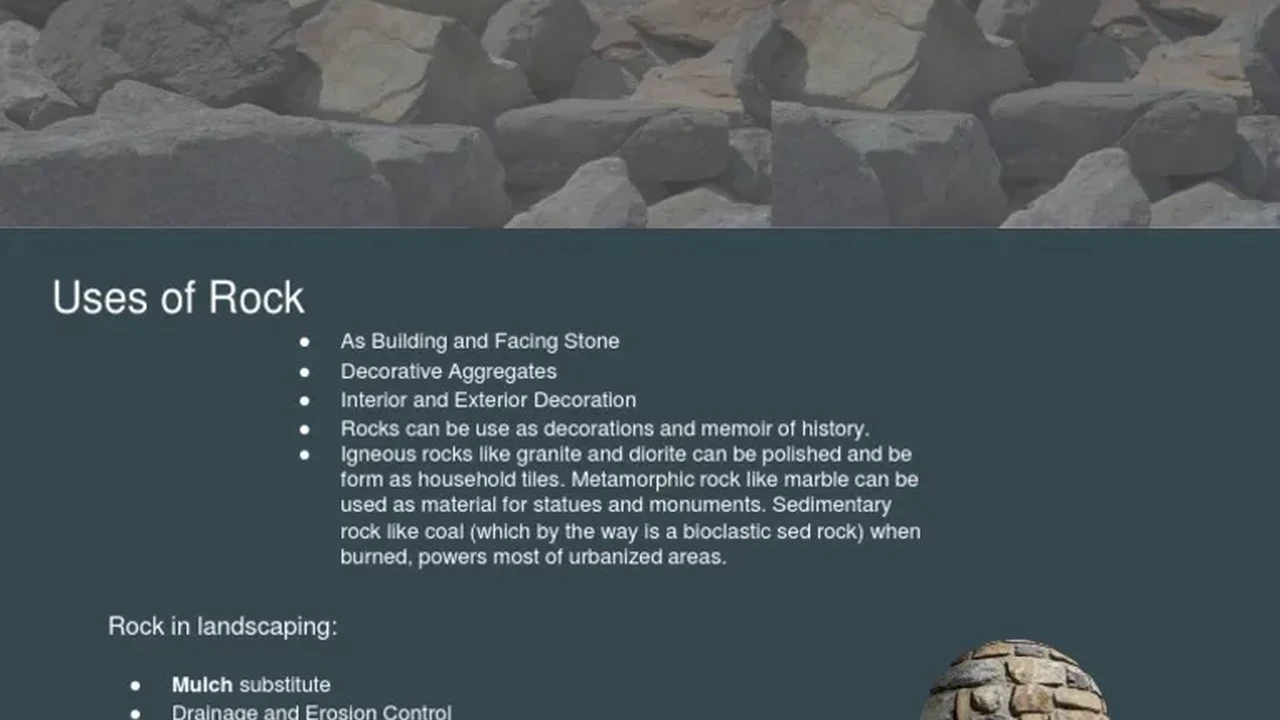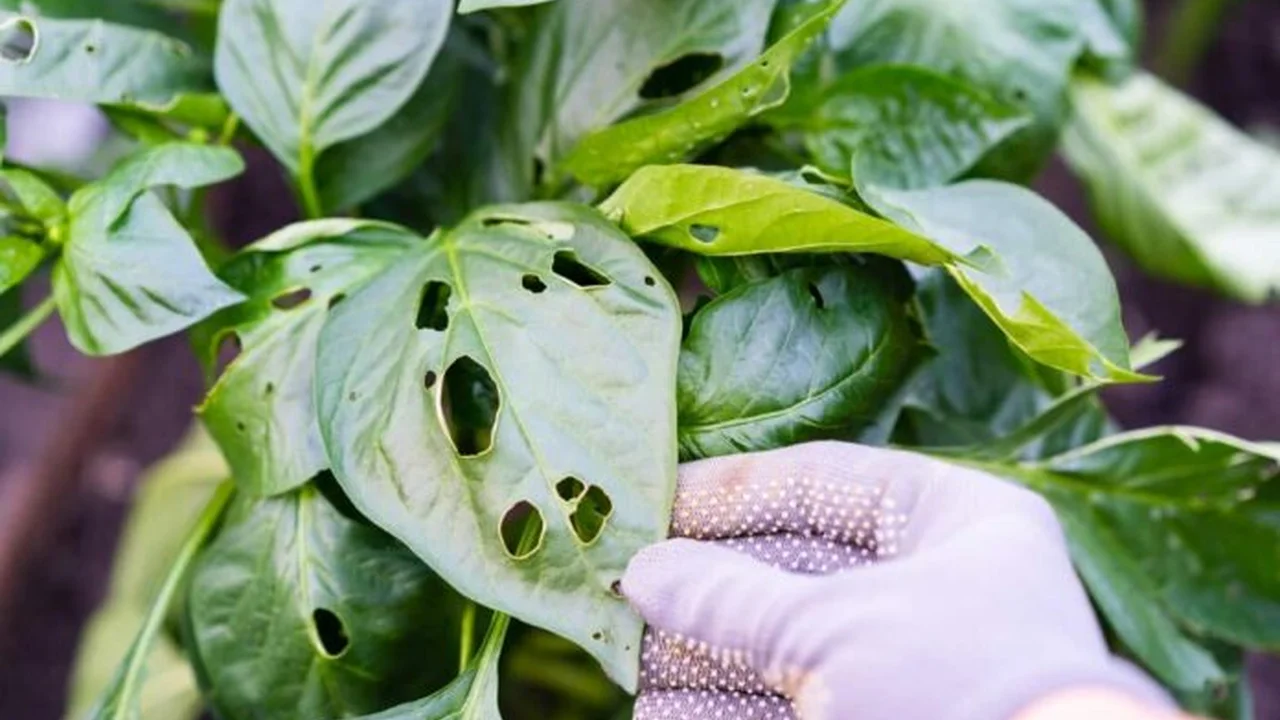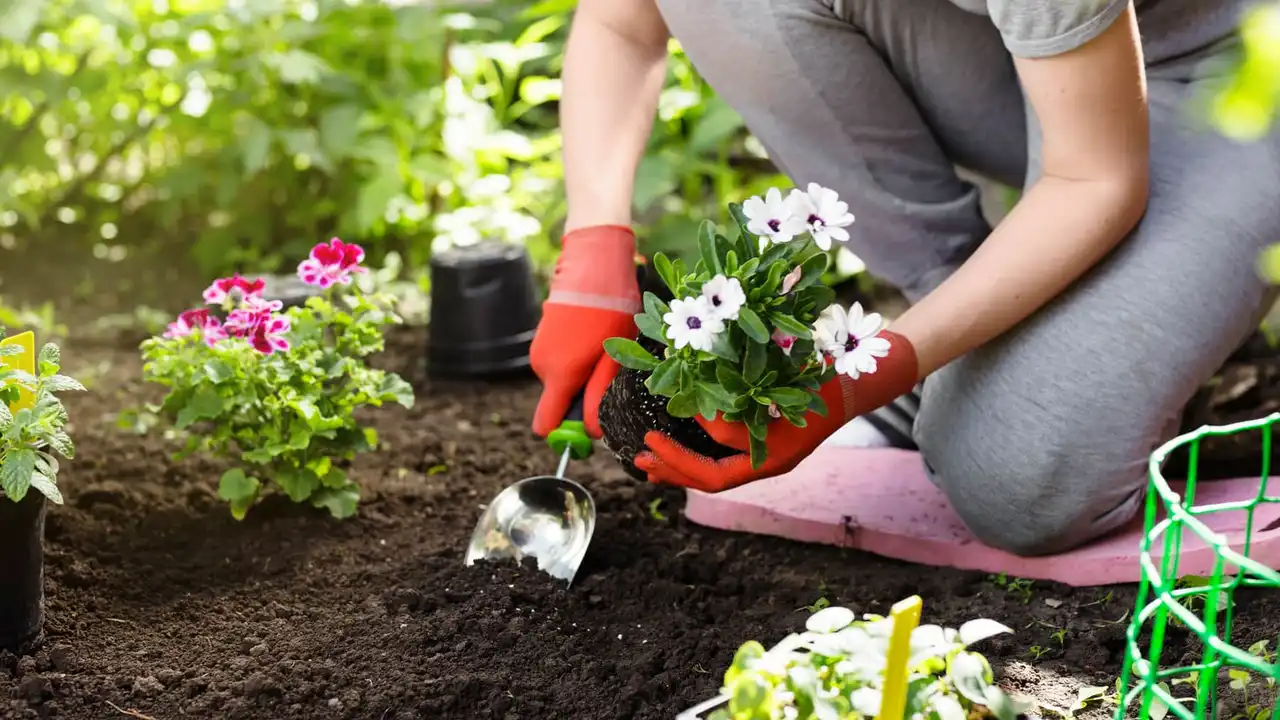Common Gardening Mistakes 7 Ways to Avoid Them
Learn about the 7 most common gardening mistakes beginners make and how to easily avoid them for a thriving garden.

Common Gardening Mistakes 7 Ways to Avoid Them
Hey there, fellow green thumbs and aspiring gardeners! We've all been there. You start with the best intentions, dreaming of lush greenery and bountiful harvests, only to find your plants looking a bit… sad. Don't worry, you're not alone! Gardening is a journey of learning, and making mistakes is part of the process. But what if I told you there are some common pitfalls that most beginners stumble into, and with a little foresight, you can easily sidestep them? That's right! In this comprehensive guide, we're going to dive deep into the seven most frequent gardening blunders and, more importantly, how to avoid them. Get ready to transform your gardening woes into wins!
Mistake 1 Overwatering and Underwatering The Hydration Balancing Act
One of the trickiest aspects of gardening, especially for newcomers, is getting the watering just right. It's a delicate balance, and both too much and too little water can spell disaster for your plants. Let's break down how to master this crucial skill.
Understanding Plant Water Needs Soil Moisture and Drainage
Different plants have different hydration requirements. A cactus, for example, will shrivel with too much water, while a fern will wilt without enough. The key is to understand your specific plant's needs and the condition of your soil. Good drainage is paramount. If your soil is heavy clay and retains too much water, your plant roots can literally drown due to lack of oxygen. Conversely, sandy soil drains quickly, meaning your plants might dry out faster.
How to Avoid It:
- The Finger Test: This is your best friend! Stick your finger about 1-2 inches into the soil. If it feels dry, it's time to water. If it's still moist, hold off.
- Know Your Plants: Research the specific watering needs of each plant you grow. Group plants with similar needs together.
- Proper Drainage: Ensure your pots have drainage holes. For garden beds, amend heavy clay soils with organic matter like compost to improve drainage.
- Water Deeply and Infrequently: Instead of frequent shallow watering, water deeply to encourage roots to grow downwards, making plants more drought-tolerant.
Recommended Tools for Optimal Watering
While the finger test is great, some tools can make watering even more precise and efficient.
Moisture Meters for Accurate Readings
A moisture meter takes the guesswork out of watering. Simply insert the probe into the soil, and it will give you a reading of the moisture level. They are relatively inexpensive and incredibly helpful, especially for indoor plants or sensitive outdoor plants.
- Product Recommendation: XLUX T10 Soil Moisture Sensor Meter
- Price Range: $10-$15 USD
- Use Case: Perfect for both indoor and outdoor plants. Easy to read, no batteries needed. Just stick it in and get an instant reading.
- Comparison: More reliable than just feeling the soil, especially for deeper root systems.
Smart Watering Systems for Busy Gardeners
For those with larger gardens or busy schedules, smart watering systems can be a game-changer. These systems can be programmed to water at specific times or even adjust based on weather forecasts.
- Product Recommendation: Rachio 3 Smart Sprinkler Controller
- Price Range: $150-$250 USD
- Use Case: Connects to your existing sprinkler system. Uses local weather data to optimize watering schedules, saving water and ensuring plants get what they need.
- Comparison: A significant investment compared to manual watering, but offers unparalleled convenience and water efficiency for larger landscapes.
Mistake 2 Ignoring Soil Health The Foundation of Plant Growth
Think of your soil as the pantry for your plants. If the pantry is empty or filled with junk food, your plants won't thrive. Healthy soil is teeming with microorganisms, nutrients, and has the right structure to support root growth and water retention.
Understanding Soil Composition and Nutrients
Soil isn't just dirt; it's a complex ecosystem. It's made up of minerals (sand, silt, clay), organic matter (decomposed plants and animals), water, and air. The balance of these components, along with essential nutrients like nitrogen, phosphorus, and potassium (N-P-K), dictates how well your plants will grow.
How to Avoid It:
- Soil Testing: Before you plant, get your soil tested. This will tell you its pH level and nutrient deficiencies. Many local agricultural extension offices offer this service, or you can buy a home kit.
- Add Organic Matter: Regularly incorporate compost, well-rotted manure, or other organic materials into your soil. This improves soil structure, water retention, and provides slow-release nutrients.
- Mulch: Apply a layer of mulch (wood chips, straw, shredded leaves) around your plants. Mulch helps retain soil moisture, suppresses weeds, and breaks down over time to add organic matter.
- Avoid Compaction: Try not to walk on your garden beds too much, as this compacts the soil and reduces air pockets essential for roots.
Essential Tools for Soil Improvement
Improving your soil doesn't have to be hard. Here are some tools that can help.
Compost Bins for Nutrient-Rich Soil Amendments
Making your own compost is one of the best things you can do for your garden. It's free, eco-friendly, and provides incredible benefits to your soil.
- Product Recommendation: VIVOSUN Tumbling Composter
- Price Range: $80-$120 USD
- Use Case: Easy to turn, speeds up the composting process, and keeps pests out. Great for turning kitchen scraps and yard waste into black gold.
- Comparison: Tumbling composters are more efficient and less labor-intensive than traditional compost piles, especially for beginners.
Soil Test Kits for pH and Nutrient Analysis
Knowing what's in your soil is the first step to fixing any issues. A good soil test kit can provide valuable insights.
- Product Recommendation: Luster Leaf Rapitest Soil Test Kit
- Price Range: $15-$25 USD
- Use Case: Tests for pH, Nitrogen, Phosphorus, and Potash. Simple color-coded results make it easy for beginners to understand.
- Comparison: While professional lab tests are more precise, this kit offers a quick and affordable way for home gardeners to get a general idea of their soil's health.
Mistake 3 Improper Plant Placement Right Plant Right Place
You wouldn't put a sun-loving plant in a shady corner, would you? Well, sometimes beginners do, often unknowingly. Placing plants in the wrong environment is a surefire way to set them up for failure.
Understanding Sunlight Requirements and Microclimates
Every plant has specific light requirements: full sun (6+ hours of direct sun), partial sun/shade (3-6 hours), or full shade (less than 3 hours). Beyond just sun, consider your garden's microclimates – areas that are warmer, cooler, windier, or more sheltered than the general area.
How to Avoid It:
- Read Plant Tags: Always, always read the plant tags or seed packets. They provide crucial information on light, water, and spacing needs.
- Observe Your Garden: Spend a day observing how sunlight moves across your garden. Note which areas get morning sun, afternoon sun, or are consistently shady.
- Consider Mature Size: Don't just think about how big the plant is now. Research its mature size to ensure it won't overcrowd other plants or structures.
- Hardiness Zones: Understand your USDA plant hardiness zone (or equivalent for your region). This tells you which plants can survive your local winter temperatures.
Mistake 4 Overcrowding Plants Give Them Room to Breathe
It's tempting to cram as many plants as possible into your garden space, especially when they're small. But plants need room to grow, both above and below ground. Overcrowding leads to competition for resources, poor air circulation, and increased susceptibility to diseases.
Spacing Guidelines and Air Circulation Benefits
When plants are too close, their roots compete for water and nutrients, and their foliage blocks sunlight from reaching lower leaves. Poor air circulation creates a humid environment, which is a breeding ground for fungal diseases.
How to Avoid It:
- Follow Spacing Recommendations: The spacing guidelines on plant tags or seed packets are there for a reason. Stick to them!
- Thin Seedlings: If you're starting from seed, thin your seedlings to the recommended spacing once they've developed a few true leaves. It feels brutal, but it's necessary for the health of the remaining plants.
- Prune for Airflow: For larger plants, strategic pruning can improve air circulation within the plant canopy.
Mistake 5 Neglecting Pest and Disease Management Early Detection is Key
Pests and diseases are an inevitable part of gardening. The mistake isn't having them, but ignoring them until they become a full-blown infestation or epidemic. Early detection and intervention are crucial.
Common Garden Pests and Organic Control Methods
Aphids, spider mites, slugs, and powdery mildew are just a few of the common culprits. Learning to identify them and knowing how to respond organically can save your plants.
How to Avoid It:
- Regular Inspection: Make it a habit to inspect your plants regularly – check the tops and undersides of leaves, stems, and flowers.
- Identify the Problem: Don't just spray! Identify the specific pest or disease. Different problems require different solutions.
- Organic Solutions First: Start with the least toxic methods. Hand-picking pests, using a strong spray of water, introducing beneficial insects, or applying neem oil are great first steps.
- Improve Plant Health: Healthy plants are more resistant to pests and diseases. Focus on good soil, proper watering, and adequate sunlight.
- Crop Rotation: For vegetable gardens, rotate your crops each year to break pest and disease cycles in the soil.
Recommended Organic Pest Control Products
Sometimes, you need a little help. Here are some effective organic options.
Neem Oil for Broad-Spectrum Pest Control
Neem oil is a natural pesticide and fungicide derived from the neem tree. It's effective against a wide range of pests and diseases and is safe for beneficial insects once dry.
- Product Recommendation: Bonide Neem Oil Concentrate
- Price Range: $15-$25 USD
- Use Case: Mix with water and spray on affected plants. Works as an insecticide, miticide, and fungicide. Great for aphids, spider mites, powdery mildew, and black spot.
- Comparison: A versatile organic option that addresses multiple issues, unlike single-purpose chemical pesticides.
Diatomaceous Earth for Crawling Pests
Food-grade diatomaceous earth (DE) is a natural, abrasive powder made from fossilized diatoms. It works by dehydrating insects with exoskeletons.
- Product Recommendation: Harris Diatomaceous Earth Food Grade
- Price Range: $10-$20 USD
- Use Case: Sprinkle around the base of plants or directly on pests like slugs, snails, ants, and earwigs. Safe for pets and humans.
- Comparison: A physical killer, not a chemical one, making it very safe for edible gardens.
Mistake 6 Neglecting Pruning and Deadheading Promoting Growth and Blooms
Many beginners are hesitant to prune or deadhead, fearing they'll harm the plant. But these practices are essential for promoting healthy growth, more blooms, and better plant shape.
The Art of Pruning and Deadheading Techniques
Pruning involves removing dead, diseased, or overgrown branches to improve plant health, shape, and air circulation. Deadheading is the removal of spent flowers to encourage the plant to produce more blooms instead of putting energy into seed production.
How to Avoid It:
- Learn Basic Techniques: Research the specific pruning needs of your plants. Generally, cut just above a node (where a leaf or branch emerges) or a healthy outward-facing bud.
- Use Sharp, Clean Tools: Dull tools can damage stems, and dirty tools can spread diseases. Clean your pruners with rubbing alcohol between plants.
- Deadhead Regularly: For flowering plants, remove spent blooms as soon as they fade. This signals the plant to produce more flowers.
- Don't Be Afraid: It might feel scary at first, but plants are resilient. A little pruning often leads to more vigorous growth.
Recommended Pruning Tools for Clean Cuts
Having the right tools makes pruning easier and healthier for your plants.
Bypass Pruners for Clean Cuts
Bypass pruners are like scissors, with two blades that bypass each other, making clean cuts that heal quickly.
- Product Recommendation: Fiskars Bypass Pruning Shears
- Price Range: $15-$25 USD
- Use Case: Ideal for cutting live stems up to 3/4 inch thick. Perfect for deadheading and light pruning.
- Comparison: Superior to anvil pruners for live wood, as they cause less crushing and damage to plant tissue.
Loppers for Thicker Branches
Loppers have long handles and powerful blades, designed for cutting thicker branches that hand pruners can't handle.
- Product Recommendation: Corona Forged Bypass Lopper
- Price Range: $40-$60 USD
- Use Case: Great for branches up to 1.5-2 inches in diameter. Essential for shaping shrubs and small trees.
- Comparison: Provides the leverage needed for larger cuts, reducing strain on your hands.
Mistake 7 Giving Up Too Soon Patience and Persistence in Gardening
Gardening isn't always instant gratification. There will be setbacks, plants that don't thrive, and moments of frustration. The biggest mistake a beginner can make is throwing in the towel too early.
Embracing the Learning Curve and Celebrating Small Wins
Every experienced gardener has killed countless plants. It's part of the learning process. Embrace the failures as learning opportunities, and celebrate every sprout, every bloom, and every successful harvest, no matter how small.
How to Avoid It:
- Start Small: Don't try to tackle a massive garden all at once. Begin with a few easy-to-grow plants and expand as your confidence grows.
- Keep a Garden Journal: Note down what you planted, when you watered, when you fertilized, and any issues you encountered. This helps you learn from your experiences.
- Join a Community: Connect with other gardeners, either online or in person. Share your successes and challenges, and learn from their experiences.
- Be Patient: Plants grow at their own pace. Some things take time. Enjoy the process, not just the outcome.
- Learn from Mistakes: When a plant dies, try to figure out why. Was it too much water? Not enough sun? This knowledge is invaluable for future gardening endeavors.
So there you have it! Seven common gardening mistakes and how to steer clear of them. Remember, gardening is a journey, not a destination. Every season brings new challenges and new joys. By avoiding these common pitfalls and embracing a mindset of continuous learning, you'll be well on your way to a thriving, beautiful garden. Happy growing!
:max_bytes(150000):strip_icc()/277019-baked-pork-chops-with-cream-of-mushroom-soup-DDMFS-beauty-4x3-BG-7505-5762b731cf30447d9cbbbbbf387beafa.jpg)






